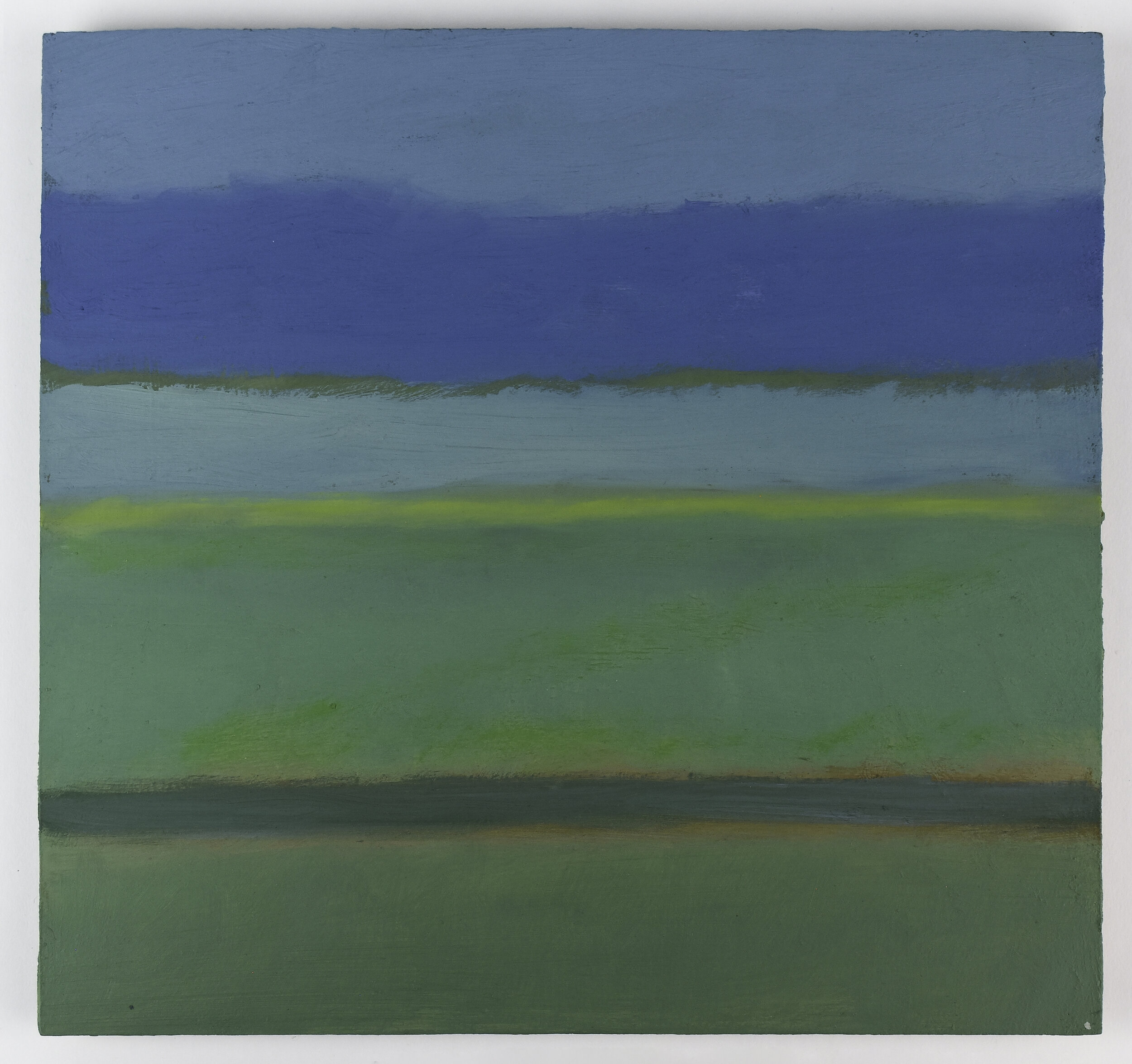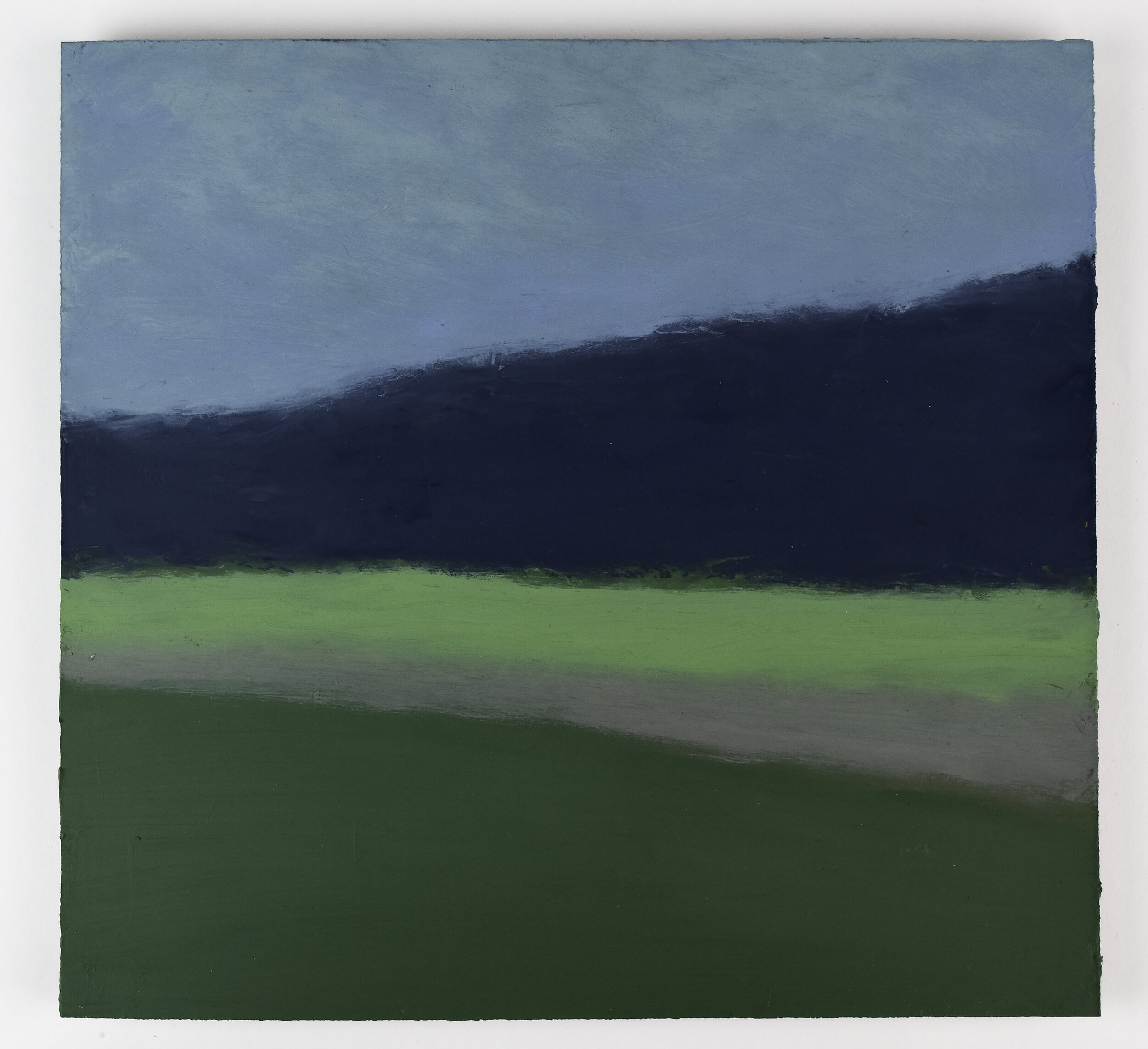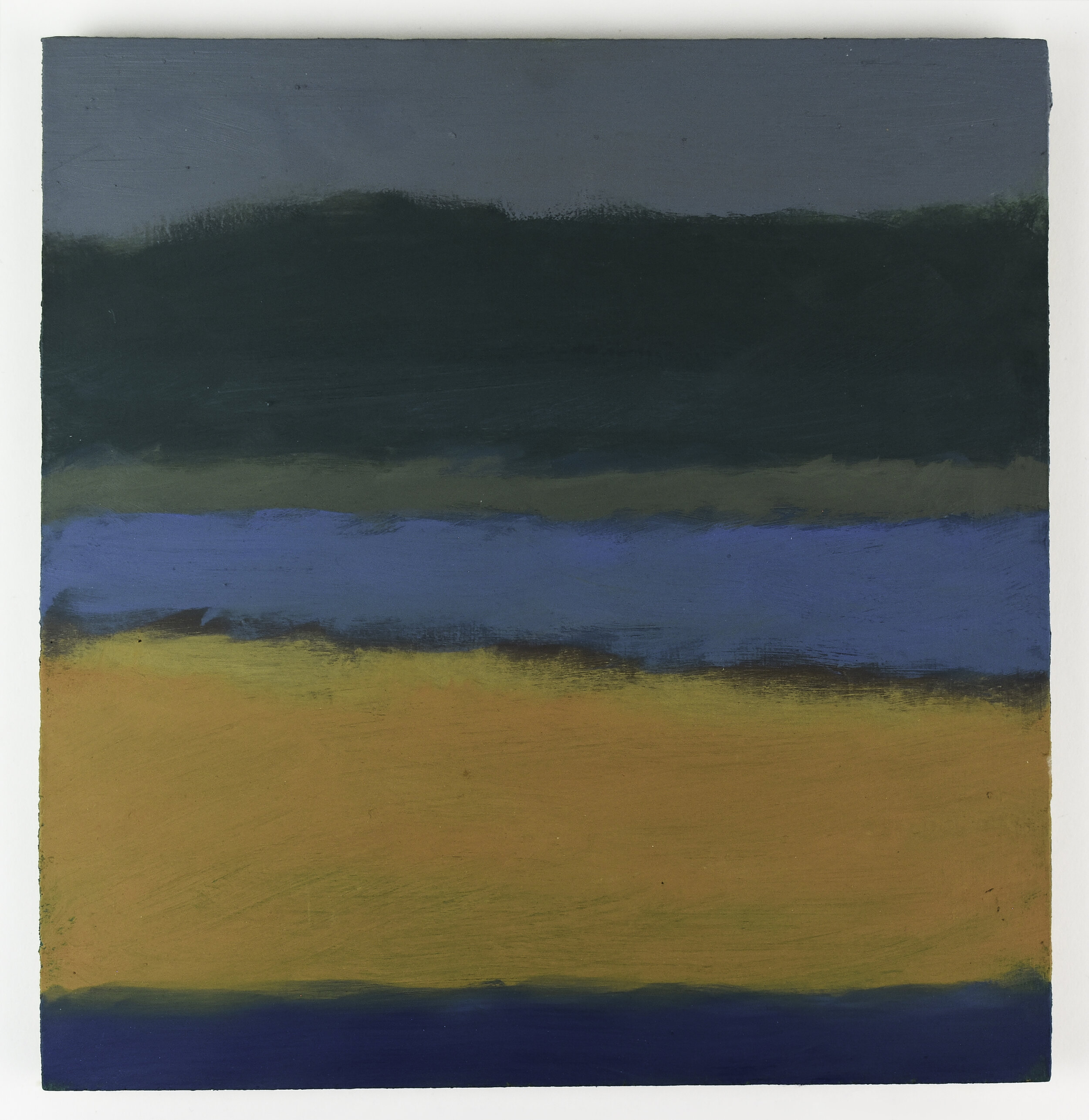Contours in Perspective
“I have taken a moment here to rest, to steal a view of the glorious vista that surrounds me, to look back on the distance I have come.” -Nelson Mandela
As humans, we see beauty in the landscape as key part of our aesthetic experiences with the land. Beauty is universal, taste for natural beauty found in the land is an innate part of human experience. How we view beauty and experience it is influenced by our vistas of the landscape more specifically, the arrangement of features in the landscape. In this section, landscape is experienced differently through changes in perspective through materials, topography, and distance from landscape. This section prompts us to interrogate our perspectives, of how we view land and its beauty, and of how we can understand our perspectives to not only be about the land but about the concept beauty itself.
Wilson Hurley, Black Mesa, 2005, oil paint on board, 47.5 x 47.5 inches framed, The Madden Collection at the University of Denver 2016.1.35.
Thomas Moran, Childe Roland to the Dark Tower Came, 1859, oil paint on canvas, 29 1/5 x 44 1/2 inches framed, The Madden Collection at the University of Denver 2016.1.50.
Both landscapes conjure up the experience of sublime in nature. In Childe Roland to the Dark Tower Came, the dark, brooding, red, sky dwarfs the dark tower showing the sublime as an overwhelming, and beautiful facet of nature. In Wilson Hurley’s Black Mesa, the gradient deep burning orange sets a backdrop for the Black Mesa to take the focus. Think of how different a landscape looks when you are walking towards it, landmarks that once seemed so large fade into the distance. Features of the landscape anchor our perspective in the land-- the Dark Tower acts an interesting foil for Wilson Hurley’s Black Mesa, questioning how different, yet similar landscape can appear drastically different due to the point at which the viewer is looking at the scene.
Elisabeth Spalding, Road to Deer Creek, 1926, watercolor on paper, 10 x 14 inches, The University of Denver Art Collections 1963. 051.
Spalding guides us from the valley to the mountain with her bright colors and pink and purplish hues. She uses color and texture to present the landscape to us, inviting us in to take a closer look, and get lost in the changing topography.
Ty Gilbert, Ty Gilbert Pro, 1996, paint on wood skateboard deck, 7.75 x 32 inches, The University of Denver Art Collections 2000.104.
Gordon Mansell, Rocky Mountain Rainbow, 1977, lithograph; two-color lithograph with hand coloring on arches buff vellum, 30 x 22.4 inches, The University of Denver Art Collections 1992.080.1-19.
Gordon’s artworks transcend decoration and focus on thought-provoking subject matter by challenging representational topography through material. This piece challenges our traditional idea of a landscape with the bright rainbow colors, spotted sky, and graphically topographic mountains.
Lucien Clergue, Three Nudes in Limestone Quarries at Les Baux, Arles, France, 1975, printed 1982, gelatin silver print, 17.125 x 21.25 inched unframed, The University of Denver Art Collections 1984.001.08.
Dwarfed by stone, the woman’s body is overwhelmed by the landscape. Her body becomes the focus, standing triumphantly against the stone, asking the question: Can a body be a landscape?
Gerry Pierce, Fern Lake, date unknown, etching, Gift of Marcella Miller Du Pont, University of Denver Art Collections 2008.078.003.
Robert Stark, BBYRG, Study #2, Study #4, 201, oil paint on panel, 11 x 12. The University of Denver Art Collections 2010.30 - 32 Gift of the Artist.










